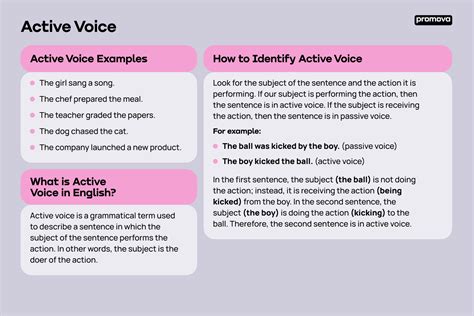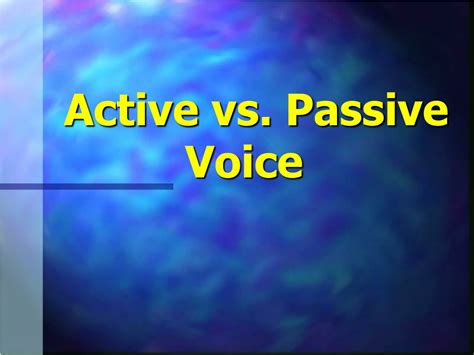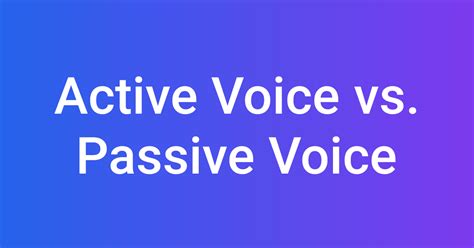In the vast landscape of writing, few stylistic choices wield as much power over reader engagement as the use of active voice. While passive voice certainly has its place, understanding when and why to prioritize active constructions can dramatically elevate your prose, making it more dynamic, direct, and captivating. This isn’t just a grammatical preference; it’s a strategic decision to connect more effectively with your audience.
The Power of Directness: Why Active Voice Engages
Active voice puts the doer of the action front and center. The structure is simple: subject + verb + object (e.g., “The dog chased the ball”). This directness carries several significant benefits for engagement:
- Clarity and Precision: Readers immediately know who is performing the action, eliminating ambiguity. This makes your message easier to process and understand.
- Stronger Impact: Active sentences are more vigorous and authoritative. They convey a sense of immediacy and confidence, which resonates more powerfully with an audience.
- Conciseness: Often, active voice allows you to express an idea in fewer words, making your writing more efficient and less verbose. This keeps readers moving through your content without unnecessary drag.
- Reader Connection: By attributing actions directly, active voice fosters a sense of agency and accountability, making the narrative more compelling and relatable.

Key Scenarios: When Active Voice Shines Brightest
While generally beneficial, there are specific contexts where opting for active voice is not just preferred, but essential for maximum engagement:
1. Business and Marketing Communication
In the world of business, clarity and persuasion are paramount. Active voice is critical for:
- Calls to Action: “Buy now,” “Sign up today,” “Learn more.” These direct commands are inherently active and propel readers towards desired actions.
- Sales and Pitch Content: “Our product solves your problem,” “We deliver results.” This builds trust and positions your message with authority.
- Reporting and Presentations: “The team achieved its targets,” “The CEO announced the merger.” Clear accountability strengthens communication.
2. Journalism and News Reporting
Journalists strive for immediacy and factual clarity. Active voice supports this by:
- Establishing Accountability: “The politician made a promise,” “The police arrested the suspect.” Readers need to know who did what.
- Creating Urgency: “The storm hit the coast,” “Firefighters battled the blaze.” This makes news feel more immediate and impactful.

3. Creative Writing and Storytelling
To immerse readers in a narrative, active voice brings scenes to life:
- Vivid Descriptions: “The dragon breathed fire,” “She whispered a secret.” Actions are immediate and dramatic.
- Character Agency: Showcasing what characters actively do helps define them and drives the plot forward, making the story more engaging.
4. Technical and Instructional Writing
When providing instructions or explaining complex processes, clarity is non-negotiable:
- Clear Commands: “Press the button,” “Attach the wires.” These are unambiguous steps.
- Process Explanation: “The system processes data,” “You should install the software.” Users understand their role or the system’s function immediately.
Acknowledge the Passive: When It Has Its Place
Despite its many advantages, active voice isn’t a universal rule. Passive voice can be appropriate when:
- The Actor is Unknown or Unimportant: “The window was broken” (who broke it doesn’t matter or isn’t known).
- You Want to De-emphasize the Actor: Often used in scientific or legal writing to maintain objectivity (e.g., “Experiments were conducted”).
- Varying Sentence Structure: Occasionally, a passive sentence can break up monotony and improve flow, but use sparingly.

Making the Switch: Tips for Stronger Writing
If you find yourself gravitating towards passive constructions, here are some tips to transition to active voice:
- Look for “to be” verbs: Words like is, am, are, was, were, be, been, being often signal passive voice, especially when followed by a past participle.
- Identify the Doer: Ask yourself, “Who or what is performing the action?” Make that the subject of your sentence.
- Rewrite: For “The report was written by John,” change to “John wrote the report.”
Conclusion: Embrace Active Voice for Impact
Ultimately, choosing active voice is about choosing engagement. It’s about empowering your words to be clear, strong, and direct, forging a stronger connection with your reader. By consciously applying active voice in the scenarios where it matters most, you don’t just improve your grammar; you elevate your entire communication, ensuring your message not only reaches but truly resonates with its intended audience.




